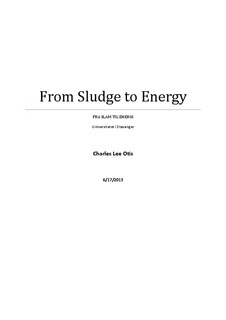| dc.description.abstract | Two primary municipal sewage sludges from the same source wastewater, but different separation technologies, were collected and fed to two pilot scale (20 L) anaerobic digesters to investigate differences in the biogas output and quality. The sludges compared were sampled from the Nodre
Follo Resnseanlegg South of Oslo, Norway, which is also where the digesters were situated.
Sedimentation sludge was collected via the plant’s sedimentation basins, and sludge from the Salsnes Filter SF1000 was collected by treating wastewater just prior to entry to the sedimentation basins. The Salsnes Filter sieve sludge was collected at two different influent flowrates (sieve rates into the filter; for the first half of the experiment the sieve rate was 100 and then 50 m3
/m
2
hr for the
second half. The sieve sludge and sediment sludge were measured for volatile solids, and then
diluted accordingly with raw wastewater to match volatile solids content; this to enable more direct
comparison when fed equally to the respective digesters. Gas volume and gas quality (CH4 and CO
2)
measurements were collected continuously with the Dolly Digester system by Belach Bioteknikk.
Results showed that the quality of the biogas was similar for both reactors, at close to 60% methane.
For the first phase, when the sieve rate was 100 m
3
/m
2
hr for the Salsnes Filter, the sediment reactor
produced 0.547 m
3
CH
4
/kgVS-destroyed compared to 0.527 m
3
CH
4
/kgVS-destroyed for the Salsnes
fed reactor. However, in the second phase with a sieve rate of 50 m
3
/m
2
hr, the sediment reactor
produced 0.567 m
3
CH
4
/kgVS-destroyed to the Salsnes 0.570 m
3
CH
4
/gVS-destroyed. These results
are supported by BMP experiments that were also conducted in the experiment, showing that the
methane potential of the sieve sludge is somewhat dependent on sieve rate. | no_NO |
